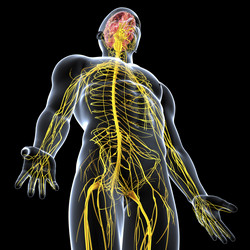Glucocorticosteroids in the central nervous system
GCs, the adrenal steroid hormones released during stress, can have an array of adverse effects in the nervous system, including disruption of hippocampal-dependent plasticity and cognition. This contradicts the accepted paradigm in which GCs are seemingly protective in necrotic insults. The EU-funded project GCS-CNS-IS (Pro-inflammatory and anti-inflammatory effects of glucocorticosteroids in the central nervous system) aimed to resolve this paradox. The project explored when the stress-released GCs are classically anti-inflammatory, and when unexpected pro-inflammatory effects occur in the challenged nervous system. Partners investigated gene expression patterns under conditions where GCs are pro-inflammatory, and examined the cellular specificity of GC-induced pro-inflammatory gene expression profiles. The effects were studied 24 hours after terminating the immune challenge, at a time point when GCs in blood were back to baseline. Researchers compared gene expression patterns for multiple inflammatory markers in the different regions of the brain. While the pro-inflammatory effects of stress were present in the hippocampus and hypothalamus, they were the opposite in amygdala. Comparing additional regions (striatum, prefrontal cortex, frontal cortex, brain stem, cerebellum, pituitary and liver) revealed a different inflammatory pattern in different brain structures. The parts of the brain traditionally most sensitive to GCs (hippocampus, amygdala and frontal cortex) were affected the most. The most interesting findings involved interleukin-1 beta (IL-1b). Stress was pro-inflammatory and potentiated the effect of lipopolysaccharides on IL-1b in the hippocampus, hypothalamus, frontal cortex, prefrontal cortex and pituitary. However, this effect was absent in the amygdala, brainstem, cerebellum and striatum. The mRNA expression of the neuronal activation marker C-fos was decreased in the amygdala but not in the hippocampus. GCS-CNS-IS impacted the classic concept of GCs as anti-inflammatory and showed that the effects of GCs are not uniform, can be pro-inflammatory and are regional-dependent. Understanding how signalling molecules such as GCs can have diametrically opposite and simultaneous effects is of great potential clinical relevance, given their common use.







